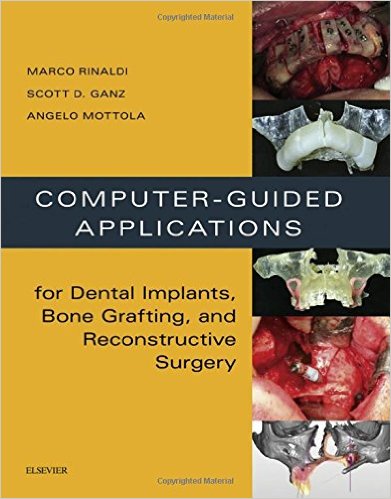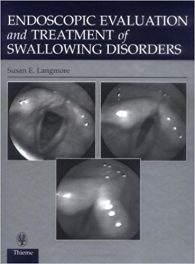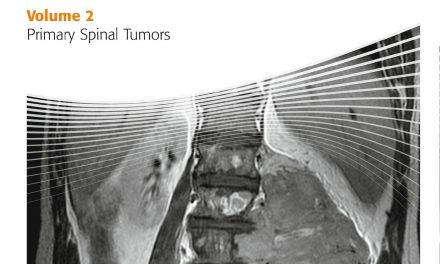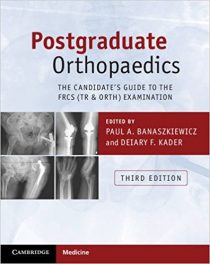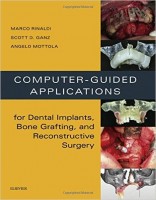 (Translation from the Italian by Dr. Stefano Lauriola)
(Translation from the Italian by Dr. Stefano Lauriola)
Editors: Marco Rinaldi, MD, DMD; Scott D. Ganz, DMD; and Angelo Mottola, MD, DMD
Publisher: Elsevier – 552 pages
Book Review by: Nano Khilnani
The purpose of this book, its editors write, is to provide clinicians in dentistry, particularly in endodontics, orthodontics, oral and maxillofacial surgery, periodontics and prosthodontics, with sound strategies and protocols for the diagnosis, assessment and successful treatment of patients who have minor and major anatomical obstacles.
This book does not suggest that dental implants are a preferred form of treatment over other options. Nor does it mandate particular types, diameter, length, or number of implants needed to complete each case presented.
Drs. Rinaldi, Ganz and Mottola point out that decisions pertaining to those matters are part of the job of the clinician. They write that they have made every effort to explain the rationale and decision choices for the treatment rendered based on one underlying question that faces the clinician every day.” And what is that question? It is this: “Is there enough bone?’’
The size, dimensions, and physical characteristics of dental implants available these days from many manufacturers vary greatly. And the amount of bone available in patients is oftentimes insufficient to place those implants.
The editors write that “even for the narrowest diameter implants, there are cases in which the bone volume is insufficient. Therefore there are potential receptor sites that do not offer sufficient bone volume to place an implant, and present an obstacle to treatment.”
In such a situation, the use of three-dimensional computed tomography (CT) for imaging is helpful, and sometimes, necessary. And in some cases, the use of lower radiation dose cone beam CT (CBCT) devices is required to assess and perform the task of placing dental implants.
There are many different scenarios posing various problems and calling for different solutions. Clinical cases have been presented in this book, with sequential images and video footage, to show important concepts, and the reasons for each prescribed treatment.
Those cases constitute a valuable feature of this book. A large number of them are presented: 41 to be exact, with lots of graphics, to document and illustrate in a practical manner, for students to learn how to do dental implants, bone grafts, and surgical reconstruction. And for practicing orthodontists to learn novel procedures.
Briefly below, we show you – the student or practitioner – what you will find in this important book:
- Theory and Rational Basis
- Anatomical Obstacles to the Insertion of Implants
- Bone Grafts
- Computer-Assisted Implant Surgery
- Maxillary Sinus: The Role of the Otolaryngologist
- Pharmacologic Management of Patients
- Clinical Cases
- Computer-Guided Applications for Dental Implants
- Computer-Guided Applications for Bone Grafting and Reconstructive Surgery
- Appendix: Bone Grafting Surgical Protocols Using Three-Dimensional Technologies
To view 11 videos of surgical cases, go to: www.rinaldiimplants.com, then enter the pin code found by scratching it off the inside front cover of your copy of this book.
In Part I, in each of the five chapters you will find material organized typically with an Introduction, discussions of topics and subtopics, and a Bibliography with numerous sources of additional information. In some chapters you will find a Summary or a Conclusion.
A very large number of full-color photos of procedures, three-dimensional computer-simulation images, and x-rays are presented throughout the pages, making this a highly valuable visual learning guide.
Here are the major benefits of using this book:
- Over 1,800 full-color images
- 41 case studies
- Clinical protocols
- Expert insight
- Availability as a digital book
- A companion website that includes video clips of selected clinical cases in this textbook
Editors:
Marco Rinaldi, MD, DMD has a private practice in Bologna, Italy.
Scott D. Ganz, DMD has a private practice in Fort Lee, New Jersey.
Angelo Mottola, MD, DMD is affiliated with Stomatological Institute at A. Beretta Maggiore Hospital in Bologna, Italy.
Contributors:
Luca Amorosa, MD – Maggiore Hospital, Bologna, Italy
Luca Borriani, MD – Rizzoli Orthopedic Institute, Bologna, Italy
Alessio Esposti – Biomedical Engineer – Materialize, Leuven, Belgium
Alessandro Gasbarrini, MD – Rizzoli Orthopedic Institute, Bologna, Italy
Gino Latini, MD – Medical Director, Hospital of Fano, Fano (PU), Italy
Giovanni Mazzatti, MD, PhD – Professor of Anatomy, University of Bologna, Bologna, Italy
Stefano Pagnutti, PhD – Biologist, Bioteck srl, Vincenza, Italy
Sandro Rosa, MD – Private Practice, Bologna, Italy
Alessandra Ruggeri, DDS – Professor of Anatomy, University of Bologna, Bologna, Italy
Valter Teti, MD – Sant Orsola-malpighi Hospital, Bologna, Italy

